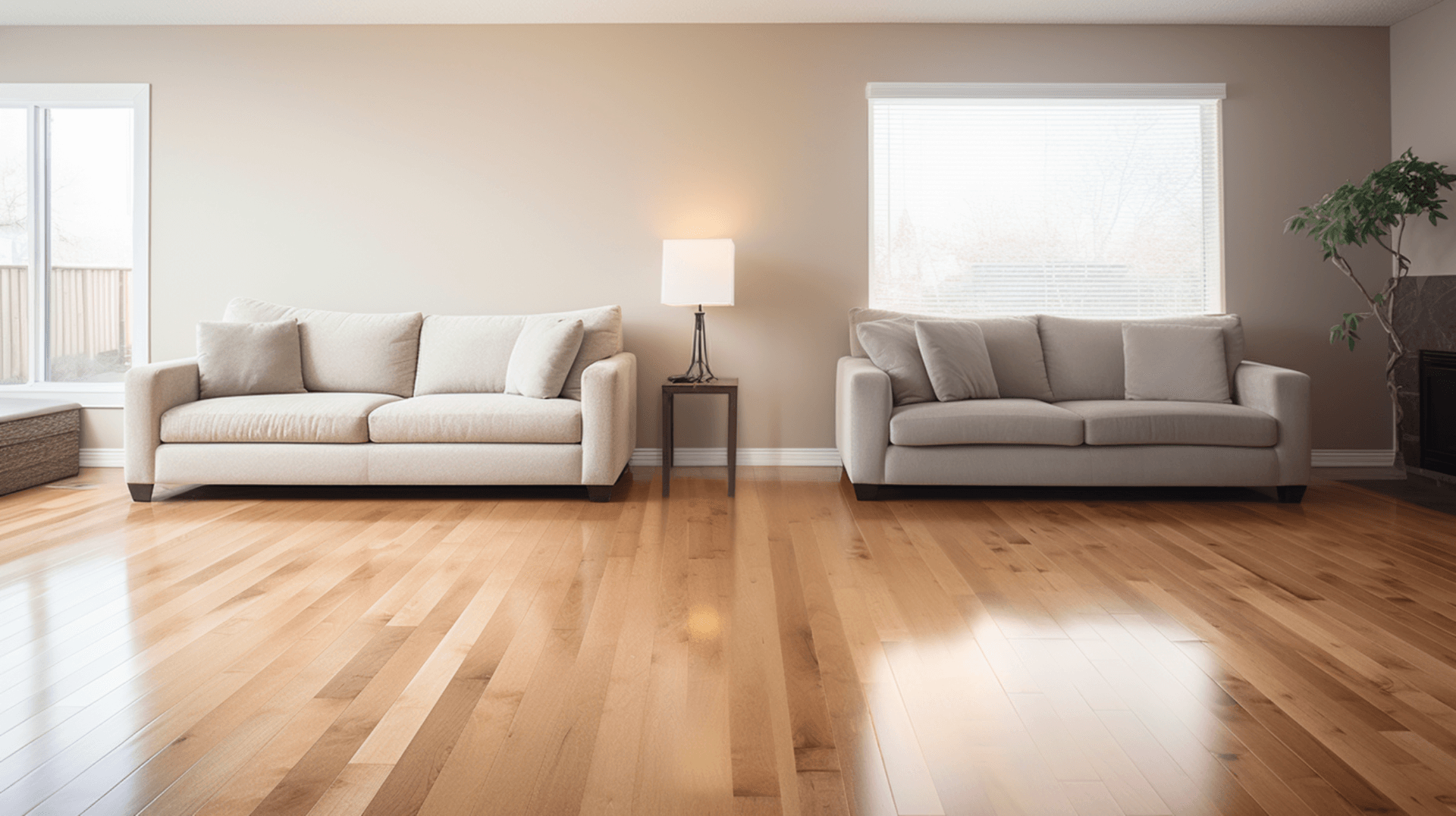Understanding the Importance of Buffing Solid Hardwood Floors
Buffing solid hardwood floors is an essential part of hardwood floor maintenance for both home owners and business owners. Buffing serves several purposes that contribute to the longevity and aesthetics of solid hardwood floors.
The purpose of buffing solid hardwood floors is to remove the top layer of dirt and grime, while also restoring the floor’s original shine. Buffing helps to protect the floor from further damage, as it seals the wood and prevents dirt and dust from penetrating the surface. Additionally, buffing helps to reduce the appearance of scratches and scuffs, and can even help to reduce the appearance of minor dents and dings.
Buffing contributes to the longevity and aesthetics of solid hardwood floors in several ways. Buffing helps to protect the floor from wear and tear, as it seals the wood and prevents dirt and dust from penetrating the surface. Buffing also helps to restore the floor’s original luster and shine, while also helping to reduce the appearance of scratches and scuffs. Additionally, buffing helps to reduce the appearance of minor dents and dings, which can help to maintain the floor’s overall beauty.
Overall, buffing solid hardwood floors is essential for home owners and business owners alike. It helps to restore the floor’s original shine, protect it from wear and tear, and maintain its overall beauty. By investing in regular buffing, individuals can ensure that their hardwood floors remain in excellent condition for years to come.
The Impact of Floor Type and Condition on Buffing Frequency
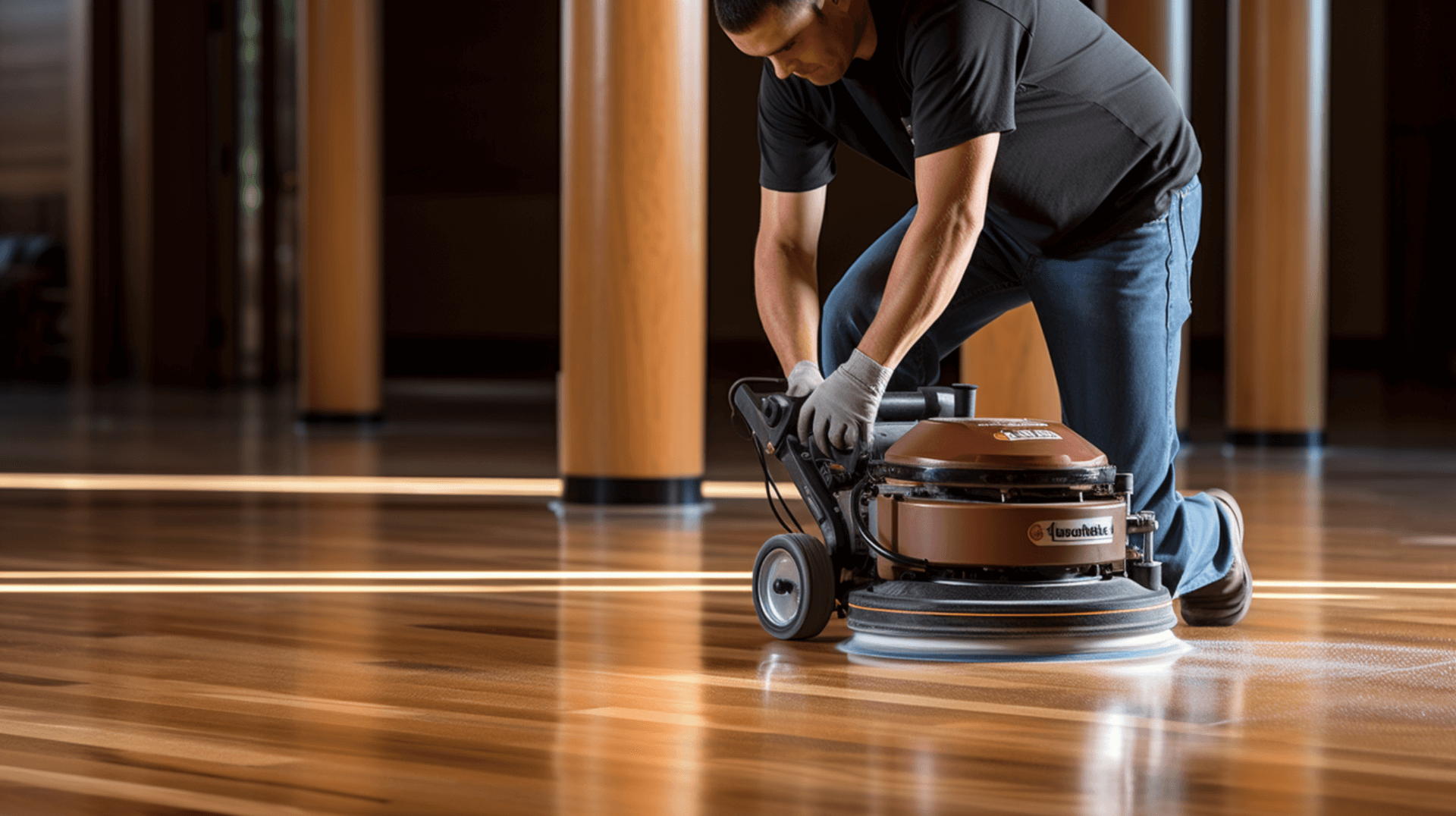
The type and condition of your wooden floor can have a significant impact on the frequency of buffing. Harder woods, such as oak and maple, are more resistant to wear and tear and require less frequent buffing. Softer woods, such as pine and cedar, are more prone to scratches and scuffs and may require more frequent buffing. Additionally, suspended timber ground floors may require additional steps, such as the installation of a damp-proof course and vents, to ensure adequate cross-ventilation, which can add to the overall cost.
The condition of the floor is also a key factor in determining the buffing frequency. If the floor has damage or decay, it may need to be repaired before buffing. This can include replacing damaged floorboards, filling gaps, or treating rot or decay. Special treatments, such as staining or sealing, can also add to the buffing frequency. For nail-down or glue-down installations exhibiting minor deflection, hollow spots, or slight popping noises, using injection adhesives at the location that needs to be addressed is an appropriate repair. Isolation repairs of damaged areas may include using fillers, putties, or colored markers to make the blemish disappear.
Considering these factors is important when deciding on buffing frequency. By understanding the type and condition of the floor, homeowners and business owners can determine the appropriate maintenance schedule. Regular buffing can help preserve the floor’s appearance and extend its lifespan. Neglecting to buff the floor when necessary can lead to further damage and the need for more extensive repairs in the future. Therefore, it is crucial to consider the type and condition of the floor to determine the optimal buffing frequency for long-term maintenance and cost-effectiveness.
Assessing Traffic Levels to Determine Buffing Frequency
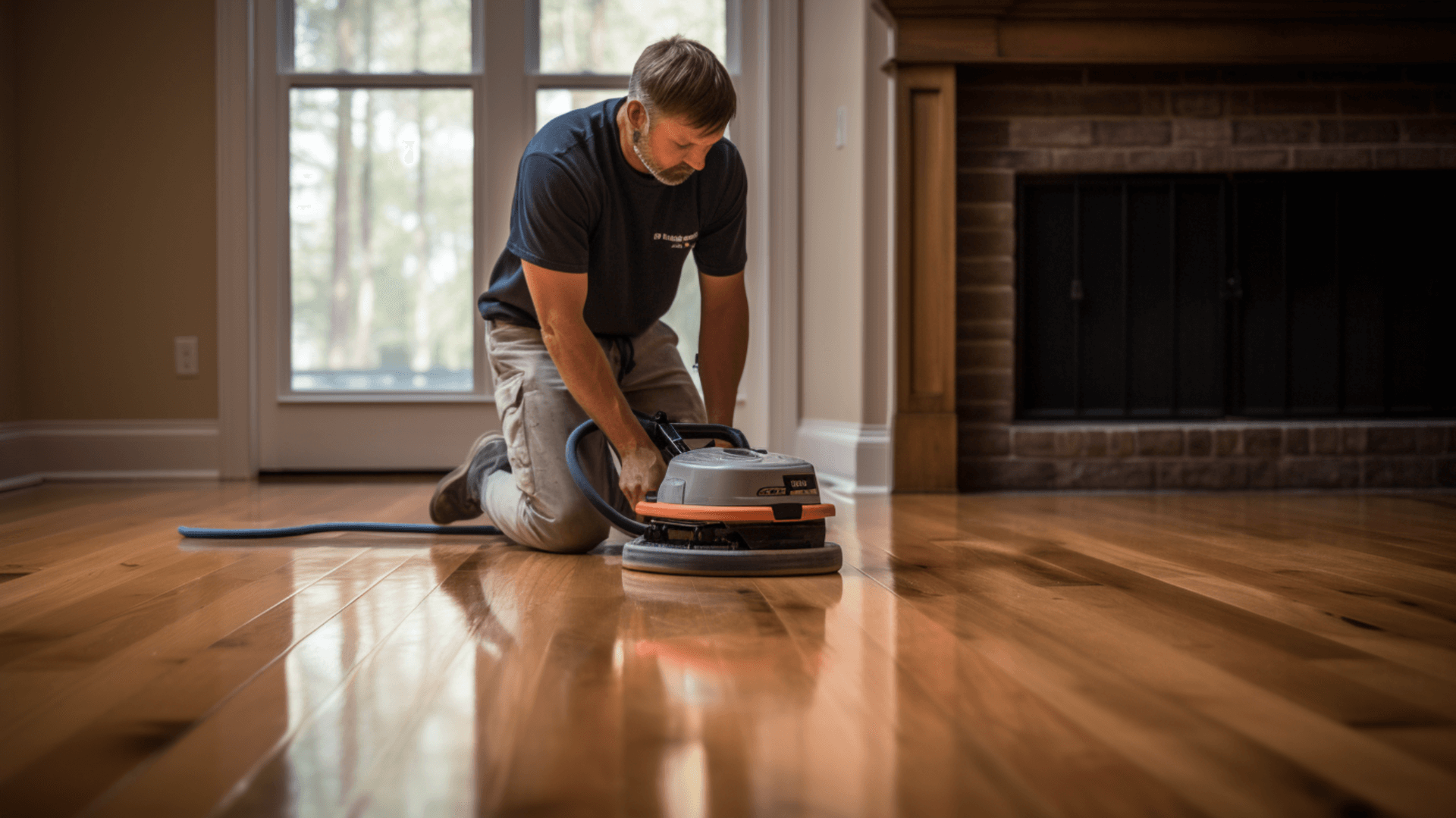
It is important to consider traffic levels when deciding on buffing frequency, as the amount of foot traffic can have a significant impact on the need for buffing. High levels of foot traffic can cause the floor to become scratched and scuffed more quickly, resulting in the need for more frequent buffing. On the other hand, low levels of foot traffic can result in less frequent buffing.
Accurately assessing traffic levels for this purpose can be challenging, as it is difficult to measure the exact amount of foot traffic on a given floor. there are several methods that can be used to estimate traffic levels. For example, observing the amount of dirt and debris on the floor can provide an indication of the amount of foot traffic. Additionally, observing the amount of wear and tear on the floor can provide an indication of the amount of foot traffic. It is also important to consider the type of traffic when assessing traffic levels. For example, heavy furniture or equipment can cause more wear and tear on the floor than light foot traffic. Additionally, certain types of footwear, such as high heels, can cause more damage to the floor than other types of footwear.
In addition, when identifying timber suspended floors, it is essential that all floor constructions should be protected from wear and tear. Additionally, it is important to follow the manufacturer’s guidelines for cleaning and maintenance, such as not using self-polishing acrylic waxes or ammonia-based cleaners, as these can damage the floor and require more frequent buffing. By accurately assessing traffic levels and following proper maintenance guidelines, homeowners and business owners can determine the appropriate buffing frequency for their floor.
Residential vs. Commercial Buffing Frequency
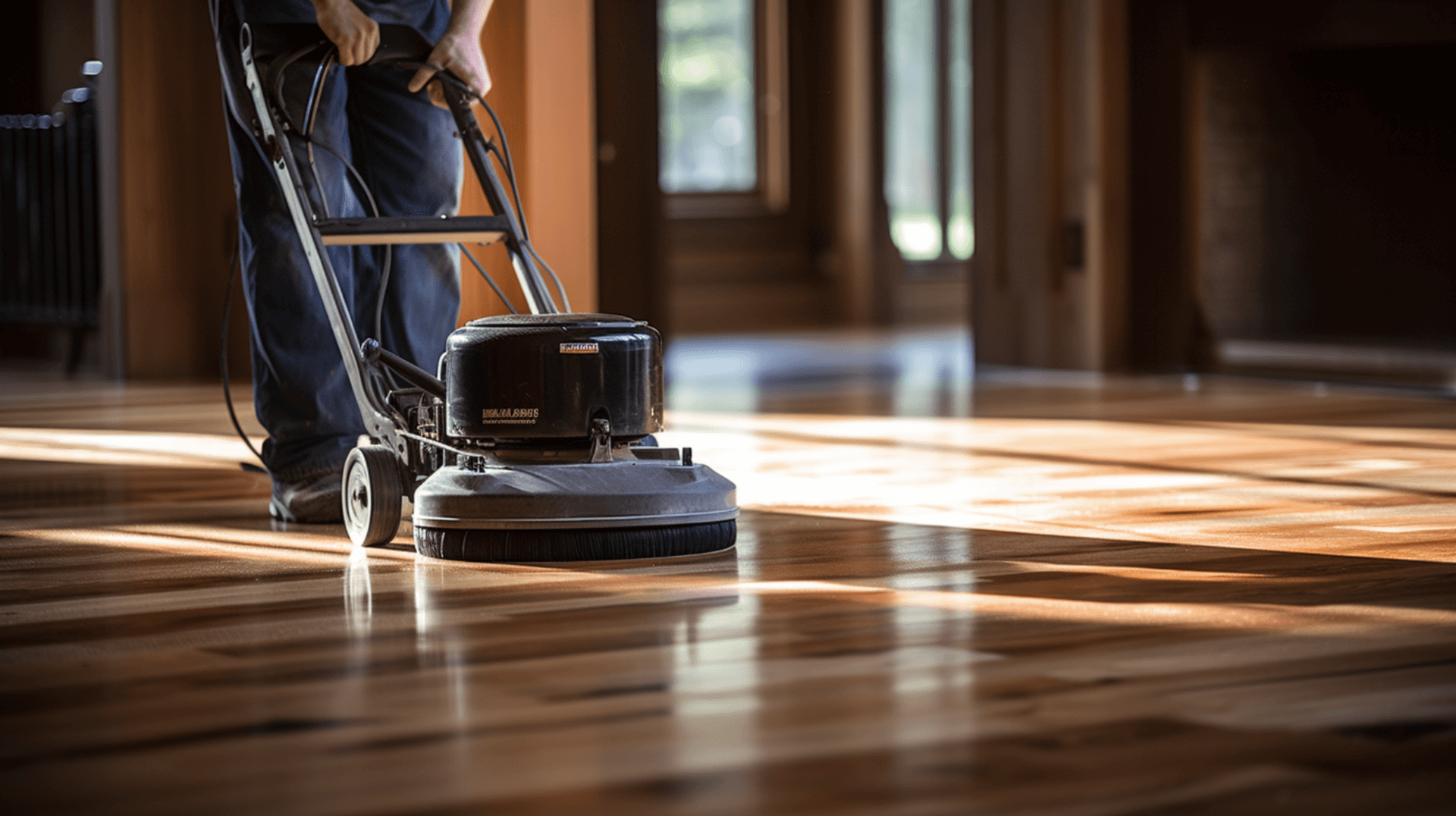
In a residential setting, a solid hardwood floor should be buffed every 6-12 months, depending on the type of wood and the amount of foot traffic. Harder woods, such as oak and maple, are more resistant to wear and tear and require less frequent buffing. Softer woods, such as pine and cedar, are more prone to scratches and scuffs and may require more frequent buffing. Additionally, if the floor has damage or decay, it may need to be repaired before buffing. Certain types of footwear, such as high heels, can cause more damage to the floor than other types of footwear. Additionally, older houses with suspended timber floors may require additional steps, such as the installation of a damp-proof course and vents, to ensure adequate cross-ventilation and insulation.
In a commercial setting, a solid hardwood floor should be buffed every 3-6 months, depending on the type of wood and the amount of foot traffic. High levels of foot traffic can cause the floor to become scratched and scuffed more quickly, resulting in the need for more frequent buffing. Additionally, certain types of footwear, such as high heels, can cause more damage to the floor than other types of footwear. Furthermore, if there are gaps in the floor covering or the floor is not insulated, air can penetrate the floor structure and make the internal habitable rooms harder to keep warm. Therefore, it is important to ensure proper insulation and ventilation in commercial settings.
The difference in buffing frequency between residential and commercial settings is primarily due to the amount of foot traffic. In a residential setting, the amount of foot traffic is typically lower, so the floor is less likely to experience wear and tear and requires less frequent buffing. In a commercial setting, the amount of foot traffic is typically higher, so the floor is more likely to experience wear and tear and requires more frequent buffing. Other factors that can contribute to the difference in buffing frequency include the type of traffic, the type of flooring, and the condition of the floor.
Recognizing the Signs that Your Solid Hardwood Floor Needs Buffing
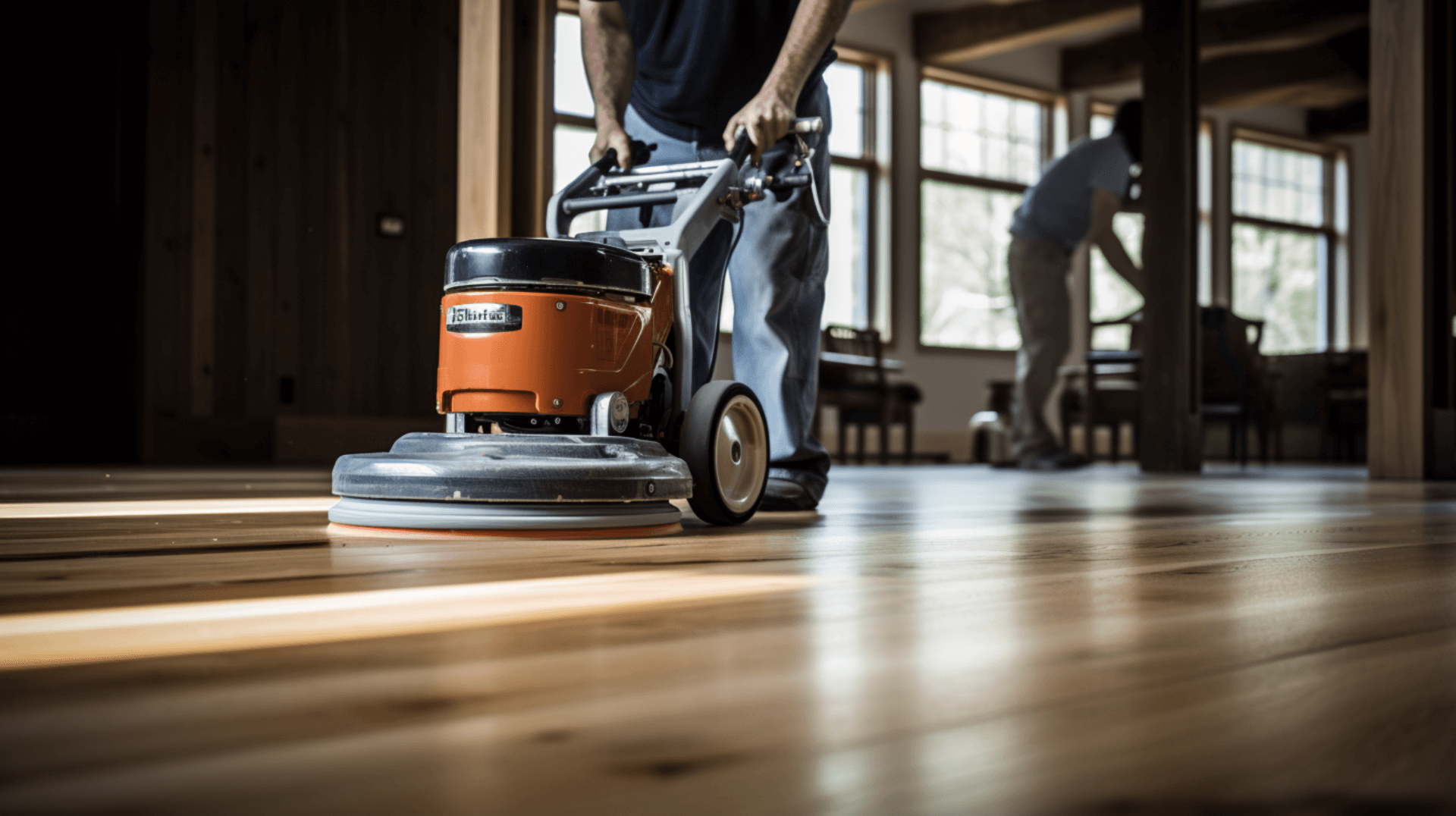
Recognizing the signs that your solid hardwood floor needs buffing is essential for maintaining its beauty and longevity. Visible signs that a solid hardwood floor needs buffing include scratches, scuffs, dullness, gaps in the floor covering, and lack of insulation. Scratches and scuffs are usually caused by heavy furniture or equipment, while dullness is caused by dirt and debris that has built up over time. Gaps in the floor covering and lack of insulation can lead to air penetration and difficulty in keeping the internal rooms warm.
To determine if your floor’s condition requires buffing, it is important to observe the amount of dirt and debris on the floor, as well as the amount of wear and tear. If the floor is covered in dirt and debris, or if there are scratches, scuffs, and dullness, it is likely that the floor needs to be buffed. Additionally, if there are gaps in the floor covering or the floor is not insulated, it is likely that the floor needs to be buffed to address these issues.
Recognizing these signs early is important because buffing can help restore the floor’s original shine, protect it from further damage, and maintain its overall beauty. By addressing these signs promptly, homeowners and business owners can prevent further deterioration of the floor and potentially avoid more extensive repairs in the future.
Preparing Your Solid Hardwood Floor for Buffing

Preparing a solid hardwood floor for buffing requires several steps. First, the floor should be thoroughly vacuumed to remove any dirt and debris. Next, the floor should be damp-mopped with a mild detergent and warm water to remove any remaining dirt and debris. After the floor has been cleaned, it should be allowed to dry completely before buffing.
To prepare a solid hardwood floor for buffing, the following materials and tools are needed: a vacuum cleaner, a mop, a mild detergent, a buffing machine, a buffing pad, and a floor finish. The buffing machine should be set to the lowest speed setting and the buffing pad should be attached to the machine. It is important to use the correct type of buffing pad for the type of floor finish being used. Additionally, it is important to check for any gaps in the floor covering or lack of insulation, as these can lead to air infiltration and difficulty in keeping the internal rooms warm.
Safety precautions should be taken during the preparation and buffing process. It is important to wear protective clothing, such as gloves and safety glasses, to protect against dust and debris. Additionally, it is important to ensure that the buffing machine is properly maintained and used according to the manufacturer’s instructions. This includes ensuring that the machine is in good working condition, the buffing pad is clean and in good condition, and the floor finish is applied evenly and in small sections. By following these steps and taking the necessary safety precautions, homeowners and business owners can effectively prepare their solid hardwood floors for buffing.
The Buffing Process: Techniques and Best Practices
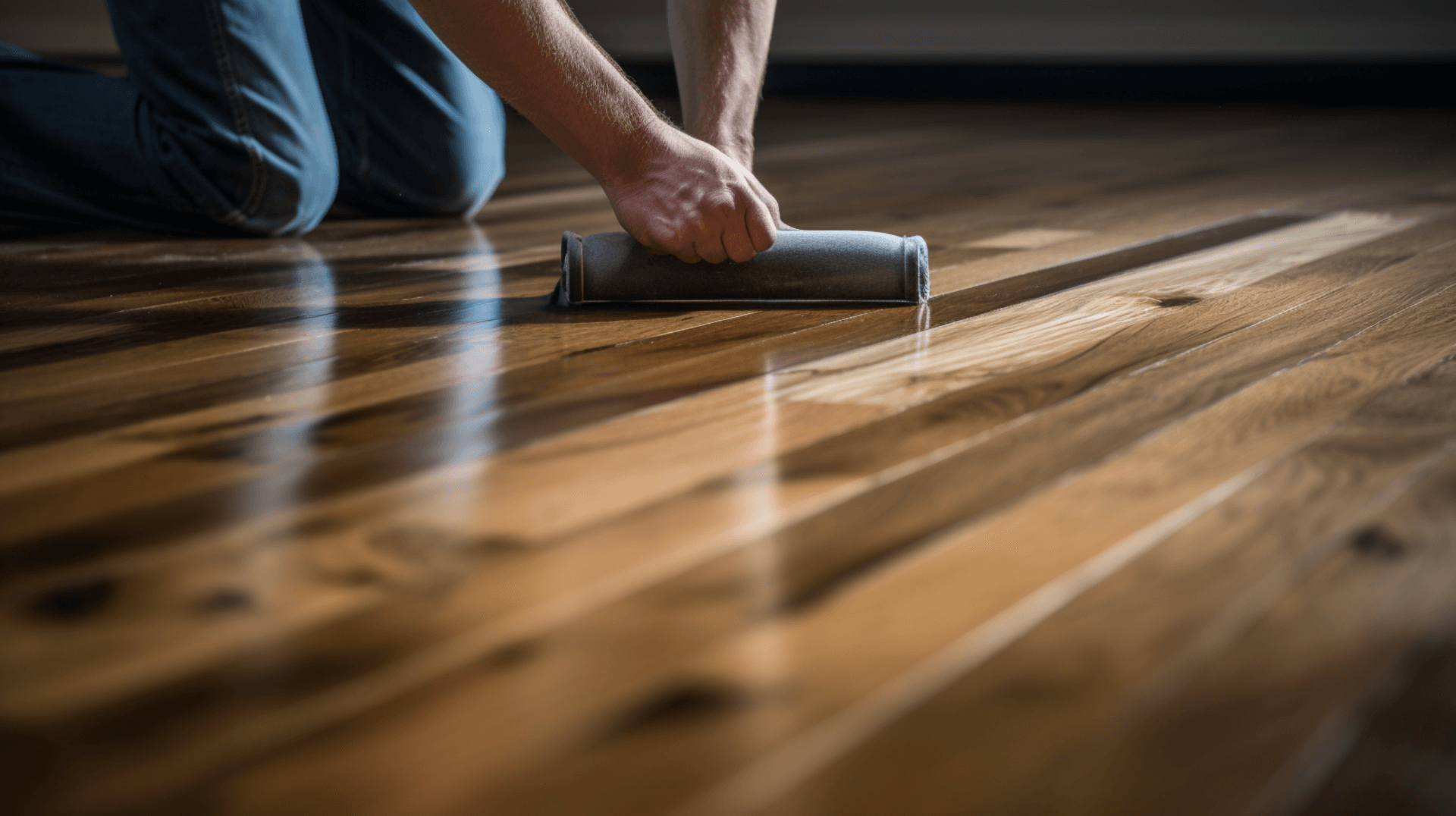
The buffing process for a solid hardwood floor involves several steps and techniques to ensure the best results. To begin, the floor should be vacuumed to remove any dirt and debris. Next, the floor should be damp-mopped with a mild detergent and warm water to remove any remaining dirt and debris. After the floor has been cleaned, it should be allowed to dry completely before buffing.
When buffing a solid hardwood floor, it is important to use the correct type of buffing machine and buffing pad. The buffing machine should be set to the lowest speed setting and the buffing pad should be attached to the machine. Additionally, it is important to use the correct type of floor finish for the type of flooring. The floor finish should be applied evenly and in small sections.
When buffing, it is important to use a slow, circular motion and to work in small sections. This will ensure that the floor finish is applied evenly and that the floor is buffed properly. The buffing pad should be moved in a slow, circular motion, overlapping each pass slightly. It is also important to use light pressure when buffing to avoid damaging the floor.
In addition to these techniques, it is important to take the necessary safety precautions during the buffing process. This includes wearing protective clothing, such as gloves and safety glasses, to protect against dust and debris. It is also important to ensure that the buffing machine is properly maintained and used according to the manufacturer’s instructions.
By following these techniques and best practices, homeowners and business owners can achieve the best results when buffing their solid hardwood floors. The buffing process is a multi-step process that requires attention to detail and proper equipment to ensure the floor is properly cleaned and prepared for the application of the floor finish.
PostBuffing Care and Maintenance for Solid Hardwood Floors
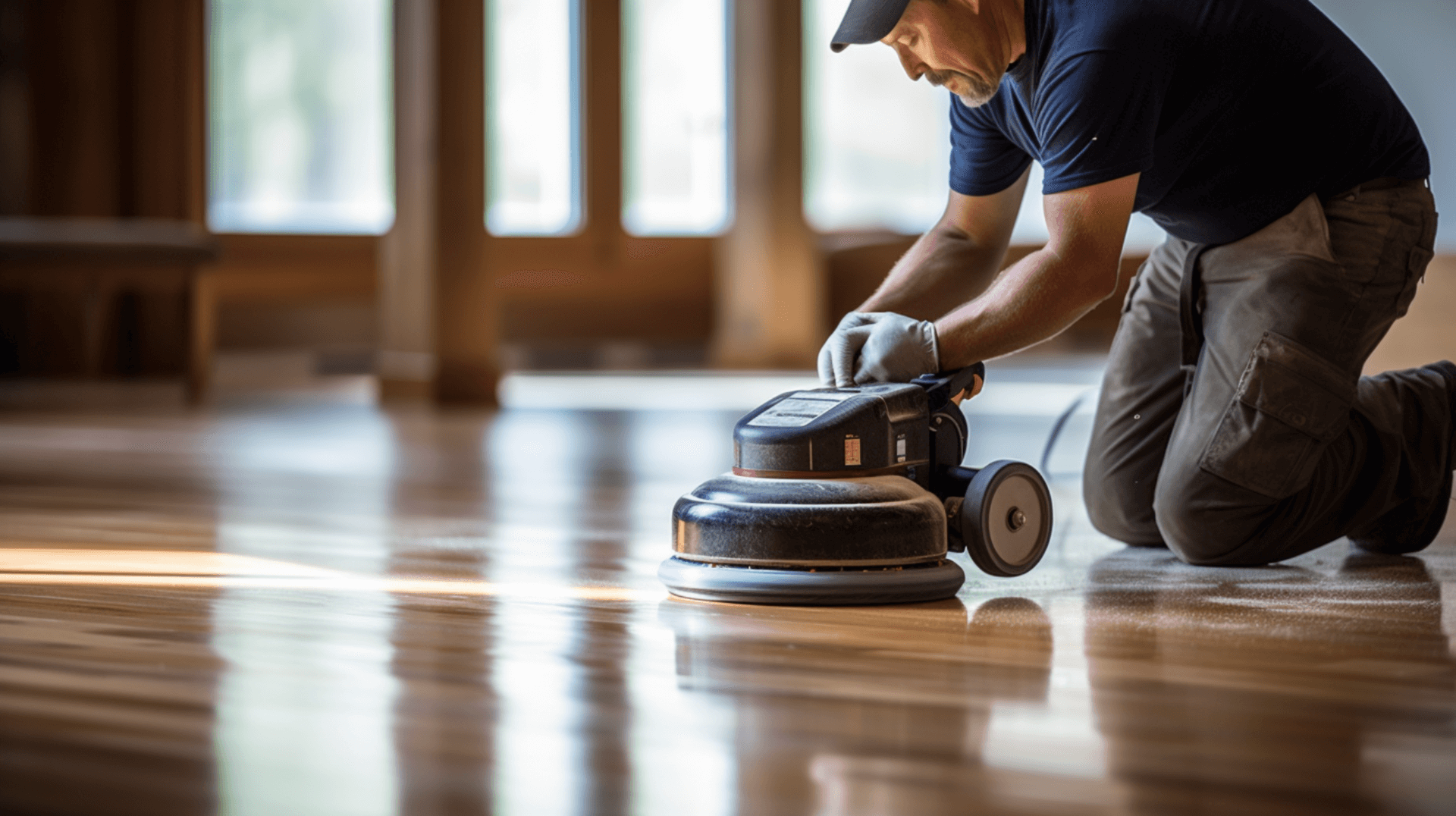
After buffing a solid hardwood floor, it is important to take the necessary steps to maintain the results of the buffing for a longer period. This includes regularly vacuuming and damp-mopping the floor to remove dirt and debris. Additionally, it is important to use the correct type of floor finish and to apply it evenly and in small sections.
To maintain the results of buffing for a longer period, it is important to follow a routine care practice. This includes avoiding the use of self-polishing acrylic waxes or ammonia-based cleaners, as these can damage the floor and require more frequent buffing. Additionally, it is important to use furniture protectors or felt pads on furniture legs to prevent scratches and scuffs. Regularly inspecting the floor for signs of wear and tear, such as scratches, scuffs, and dullness, and addressing any issues promptly is also important.
In a residential setting, solid hardwood floors should be buffed every 6-12 months, depending on the type of wood and the amount of foot traffic. Harder woods require less frequent buffing, while softer woods may require more frequent buffing. It is also important to address any damage or decay before buffing. In a commercial setting, solid hardwood floors should be buffed every 3-6 months due to higher levels of foot traffic.
Routine care practices, such as regular cleaning, using the correct floor finish, and implementing preventative measures, can help reduce the need for frequent buffing. By following these steps, homeowners and business owners can maintain the results of buffing and keep their solid hardwood floors looking beautiful and well-maintained.
Common Mistakes to Avoid When Buffing Solid Hardwood Floors
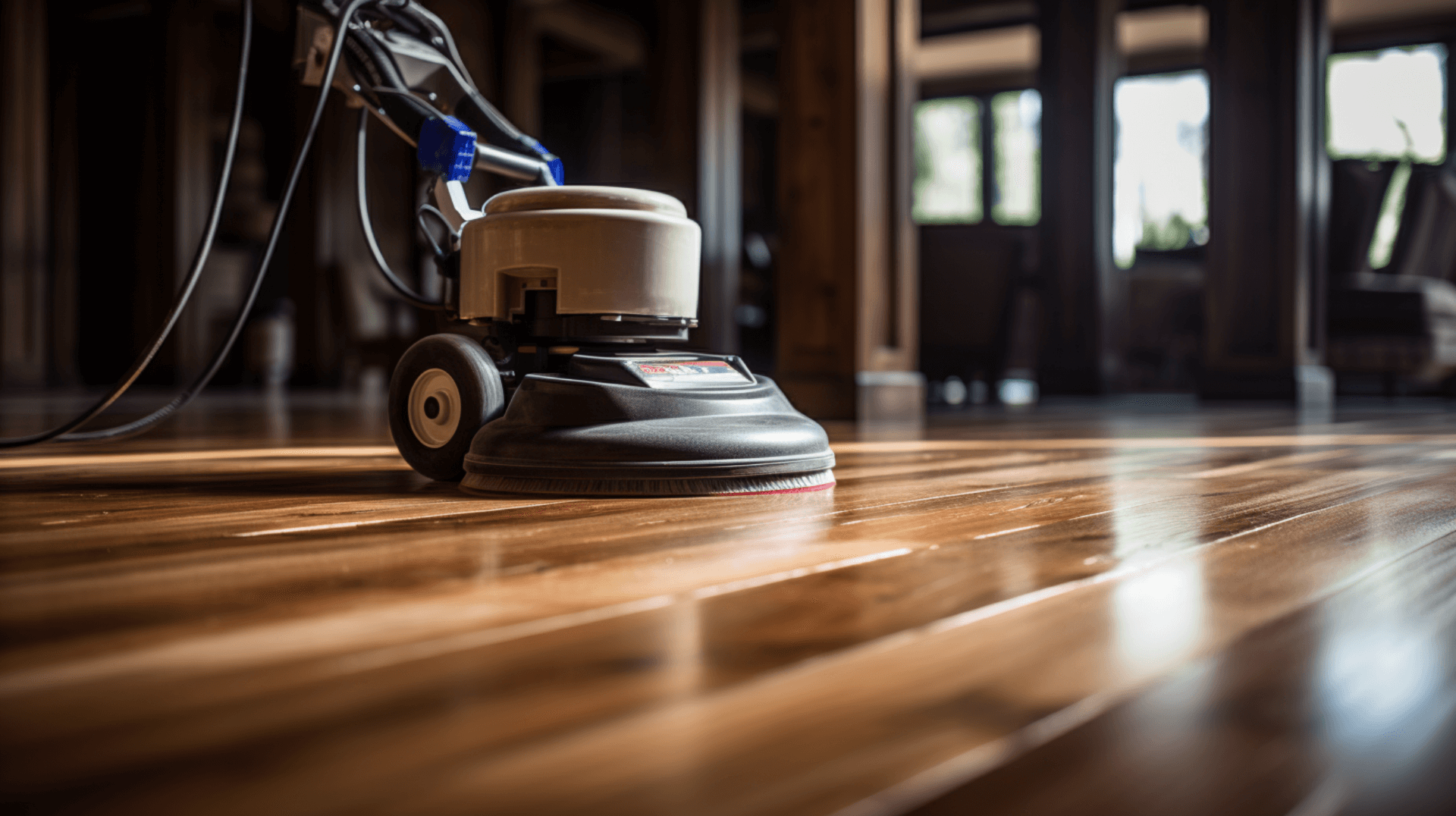
Common Mistakes to Avoid When Buffing Solid Hardwood Floors:
During the buffing process, there are several common mistakes that homeowners and business owners should avoid to ensure the best results for their solid hardwood floors. These mistakes can have a significant impact on the condition and longevity of the floor, leading to scratches, scuffs, dullness, and even damage. by following the correct steps and techniques, these mistakes can be easily avoided.
One common mistake is using the wrong type of buffing machine, buffing pad, or floor finish. Using the wrong equipment or finish can result in an uneven finish and can cause the floor to become damaged more quickly. To avoid this, it is important to use the correct type of buffing machine, buffing pad, and floor finish for the specific type of flooring.
Another mistake is using too much pressure when buffing. Applying excessive pressure can lead to damage, such as scratches and scuffs, on the floor. It is important to use light pressure when buffing to avoid this issue.
Buffing in the wrong direction is also a common mistake. It is important to buff in the direction of the wood grain to achieve a smooth and even finish. Buffing against the grain can cause the floor to become uneven and can result in visible scratches.
Not properly preparing the floor before buffing is another mistake to avoid. Vacuuming and damp-mopping the floor before buffing is essential to remove dirt and debris that can cause scratches and dullness. Additionally, not allowing the floor to dry completely before buffing can result in an uneven finish and poor absorption of the floor finish.
Not taking the necessary safety precautions can lead to mistakes and potential accidents. it is important to wear protective clothing, such as gloves and safety glasses, to protect against dust and debris. properly maintaining the buffing machine and following the manufacturer’s instructions is also crucial for safe and effective buffing.
By avoiding these common mistakes and following the correct steps and techniques, homeowners and business owners can maintain the condition and longevity of their solid hardwood floors.
Professional Buffing Services: When to Consider Them
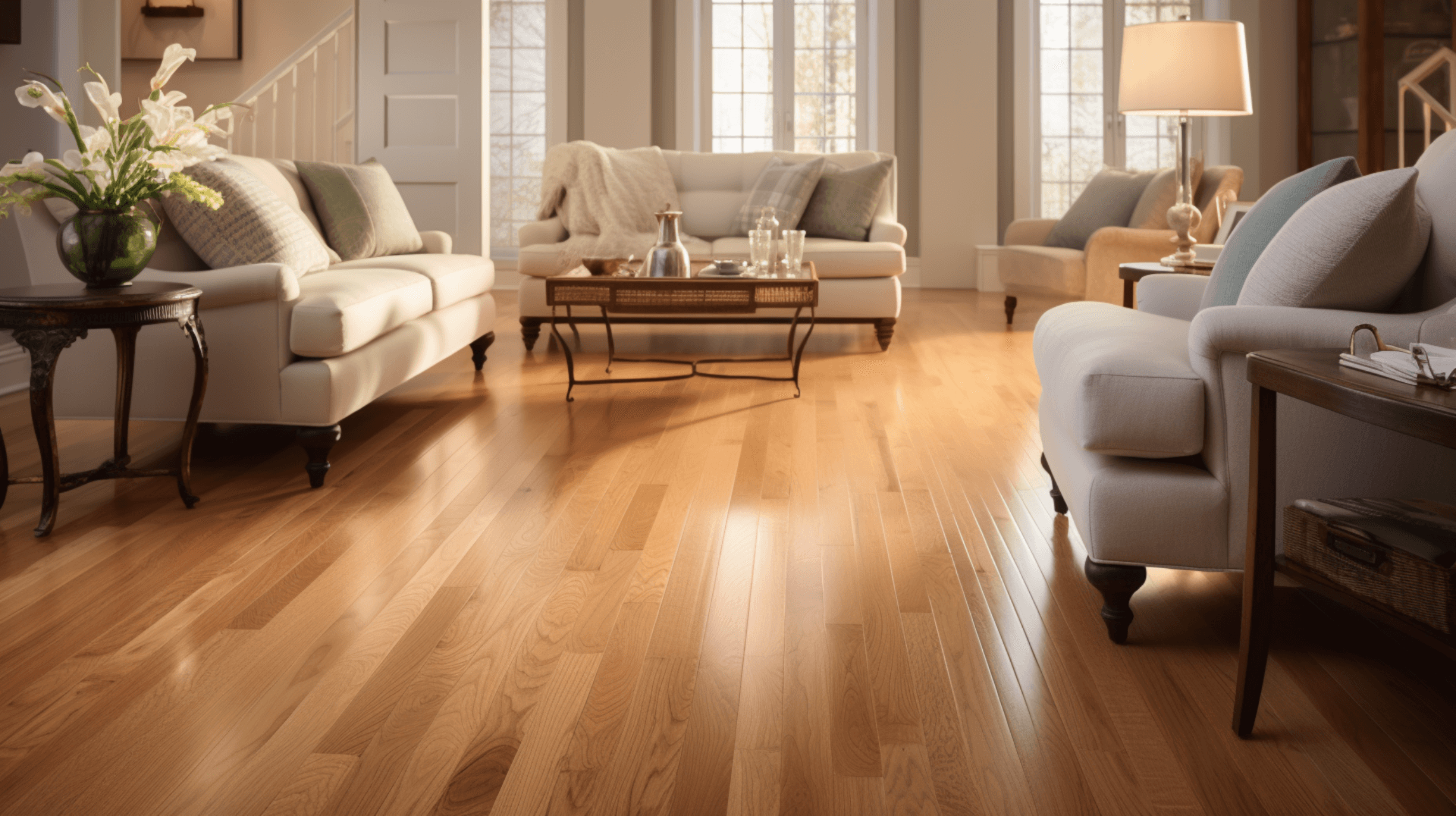
Professional buffing services can be a great option for homeowners and business owners who want to maintain the beauty and longevity of our solid hardwood floors. When should you consider hiring professional services for buffing your solid hardwood floor? If your floor is heavily scratched, scuffed, or dull, or if you have gaps in the floor covering or lack of insulation, it is likely that professional buffing services are needed. Additionally, if you are unsure of the type of buffing machine, buffing pad, or floor finish to use, or if you are not confident in your buffing skills, it is best to hire a professional. Additionally, if there are signs of corrosion in any steel structural supports in the sub-floor void, or if there are risks to joist ends in relation to the penetration of warm, moist air, it is best to hire a professional.
What are the benefits of professional buffing services? Professional buffing services can provide a more thorough and even finish than DIY buffing, as well as a longer-lasting result. Professional buffing services can also help to restore the floor’s original shine and protect it from further damage. Additionally, professional buffing services can help address underlying issues such as gaps or lack of insulation, ensuring that your floor is in the best possible condition.
How can GJP Floor Sanding help with your buffing needs? GJP Floor Sanding offers professional buffing services that are tailored to the specific needs of your solid hardwood floor. Our experienced team uses high-quality equipment and floor finishes to ensure a superior finish. We can assess the condition of your floor, address any underlying issues, and provide expert advice on maintenance and care. With GJP Floor Sanding, you can trust that your solid hardwood floor will receive the best possible buffing treatment, resulting in a beautiful and long-lasting finish.
Expert Advice on Buffing Solid Hardwood Floors
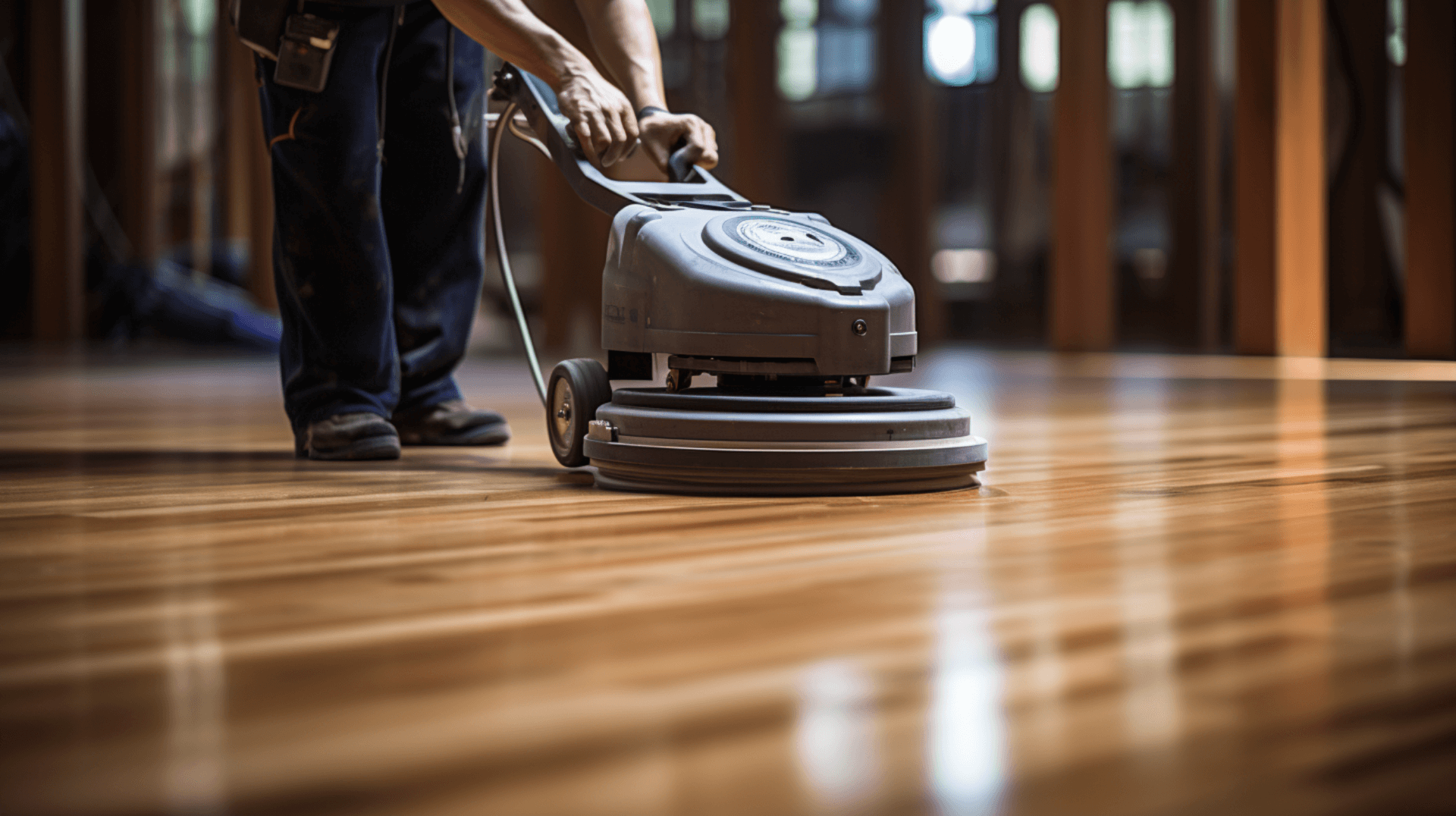
Experts recommend taking a few key steps when buffing solid hardwood floors. First, it is important to use the correct type of buffing machine, buffing pad, and floor finish for the specific type of flooring. Additionally, it is important to use light pressure when buffing to avoid damaging the floor. Buffing in the direction of the wood grain is also essential to achieve a smooth and even finish.
Expert advice can help homeowners and business owners maintain their solid hardwood floors better. This includes regularly vacuuming and damp-mopping the floor to remove dirt and debris, using the correct floor finish, and implementing preventative measures, such as using furniture protectors or felt pads on furniture legs. Additionally, it is important to leave room for expansion around the edges of each room, seal the gaps between the floorboards and along the skirting, and fit insulation tightly between the floor joists. Any timber to be used as a new floor covering should also be left in the room for some weeks with the heating on before being laid to prevent it from warping.
GJP Floor Sanding offers unique insights based on our expertise in the field. Our experienced team uses high-quality equipment and floor finishes to ensure a superior finish. We can assess the condition of your floor, address any underlying issues, and provide expert advice on maintenance and care. With GJP Floor Sanding, you can trust that your solid hardwood floor will receive the best possible buffing treatment.
Contact GJP Floor Sanding for Your Buffing Needs
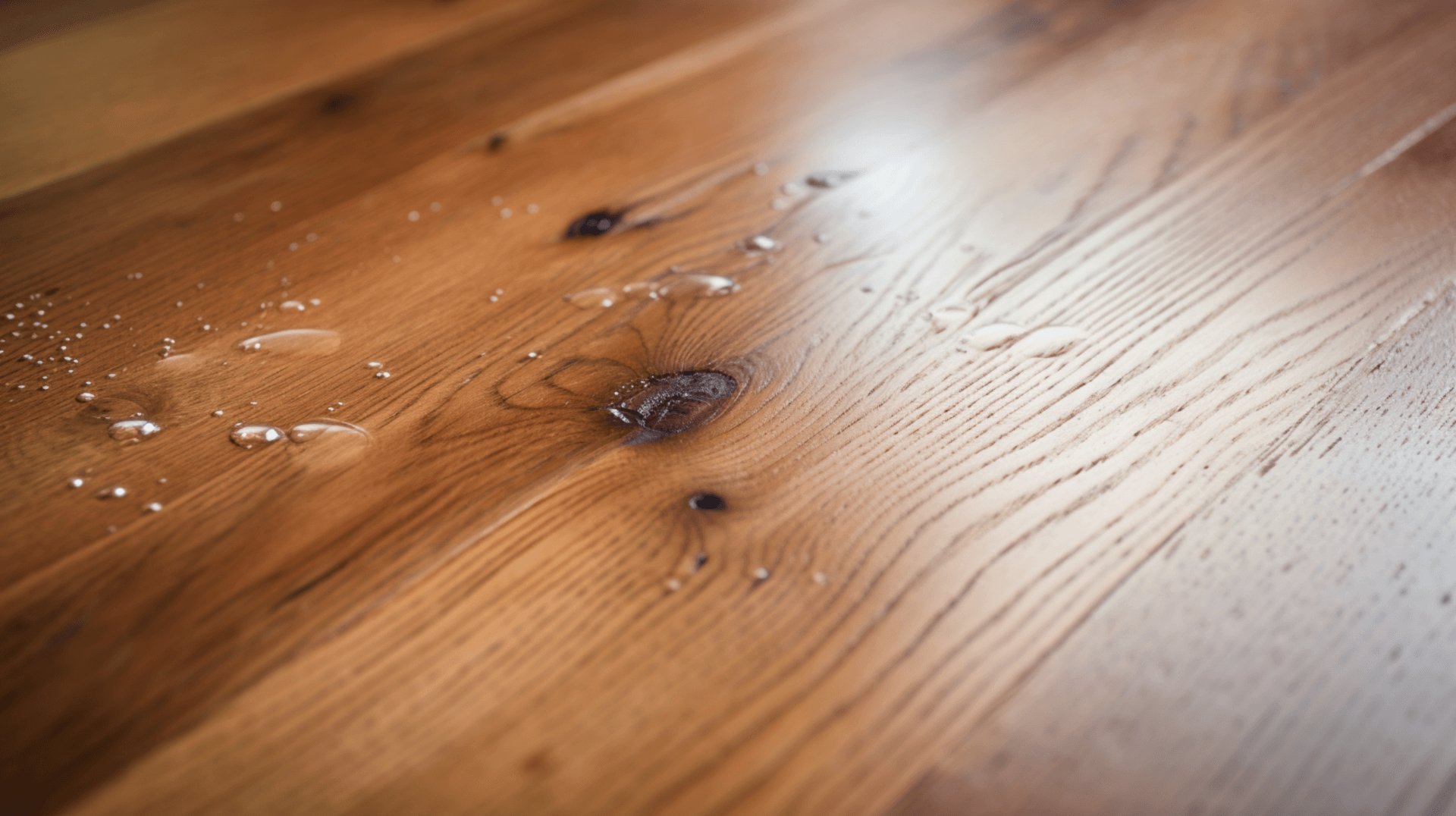
To get in touch with GJP Floor Sanding for your buffing needs, you can visit our website or call our customer service team. Our website provides detailed information about our services and allows you to book an appointment online. Our customer service team is available to answer any questions you may have and provide advice on the best course of action for your floor.
GJP Floor Sanding is the perfect choice for homeowners and business owners looking for professional buffing services for our solid hardwood floors. With over 20 years of experience in the floor sanding and buffing industry, GJP Floor Sanding offers a comprehensive range of services to help maintain your solid hardwood floor. From buffing and sanding to staining and sealing, GJP Floor Sanding can provide the perfect solution for your flooring needs.
Our experienced team uses high-quality equipment and floor finishes to ensure a superior finish. We can assess the condition of your floor, address any underlying issues, and provide expert advice on maintenance and care. Additionally, GJP Floor Sanding can provide advice on the best type of buffing machine, buffing pad, and floor finish to use for your specific type of flooring. We can also help with other floor maintenance needs, such as leaving room for expansion around the edges of each room, sealing the gaps between the floorboards and along the skirting, and fitting insulation tightly between the floor joists. Any timber to be used as a new floor covering should also be left in the room for some weeks.
Contact GJP Floor Sanding today to discuss your buffing needs and benefit from our professional services and expertise in solid hardwood floor maintenance.
